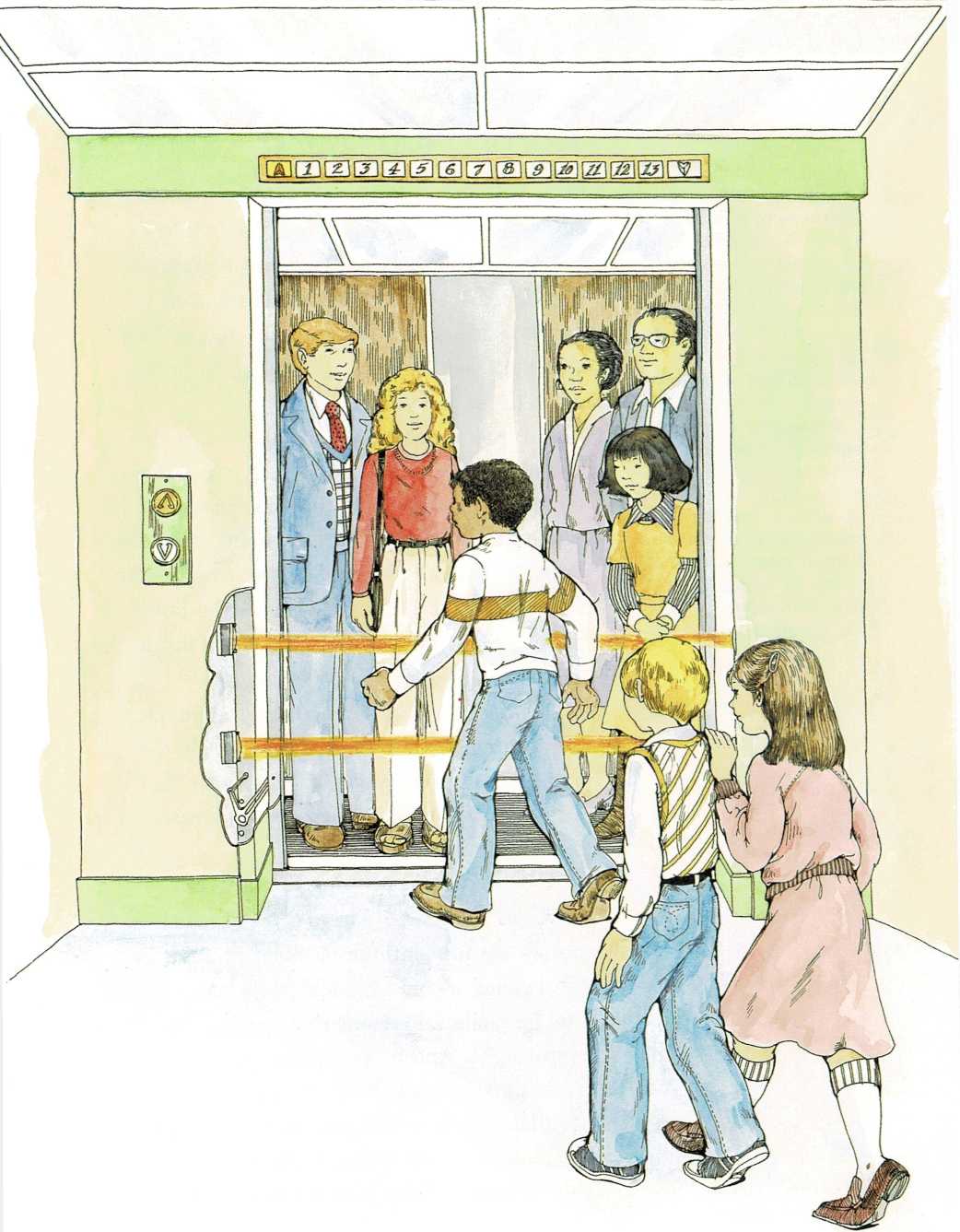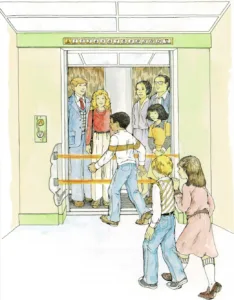Eyes for machines
Sometimes only a few people get on and off the elevator. Sometimes lots
of people get on and off. But the elevator always seems to know how long
to stop. The door doesn’t close until the last person has gotten out or
stepped inside.
Is the elevator thinking? Does it count the people? Not really—but it
does \”see” people coming and going. It has an electric eye!
At one side of the elevator there is a light that shines a beam across
the open doorway. At the other side, an electric eye \”sees” the beam of
light. When nothing is in the doorway, the beam of light shines on the
electric eye. This makes the electric eye send the door-opening machine
a signal to close the door. But when people step in or out, they walk
between the beam of light and the electric eye. This keeps the electric
eye from sending the door-closing signal, so the door stays open.
The door stays open as long as people walk through the beam of light.
When everyone is in or out, the beam of light shines on the electric eye
again. Then the electric eye sends its signal. The door closes and the
elevator glides up or down to another floor.

In the year 1879, a few city streets were lit with electric
lights—hot, glaring lights that could only be used outdoors. Thomas
Edison thought electricity could light people’s houses, too. But he knew
that a different kind of light was needed.
Edison was already a successful inventor when he began working on the
electric light, or lamp, as he called it. But the job wasn’t easy,
even for him. A great many attempts and errors, as well as a lot of
plain hard work, went into this invention.

